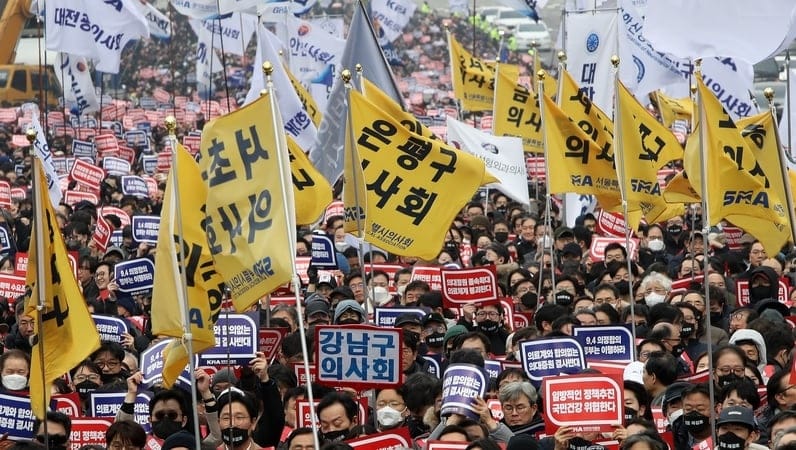How South Korea's Healthcare Crisis Emerged This Year
As the crisis unfolded, it became clear that this was not merely a disagreement over numbers but a fundamental clash of visions for the future of healthcare in South Korea.

This article is part of Focus on Korea's continuing series on Korean society
South Korea, long renowned for its efficient and accessible healthcare system, finds itself embroiled in a complex crisis that has been unfolding since early 2024. The root of this turmoil lies in the government's ambitious plan to increase medical school admissions by 2,000 seats, a move that has sparked fierce opposition from the medical community. This conflict has not only disrupted medical services across the country but has also ignited a broader debate about the future of healthcare in South Korea. As the crisis enters its fifth month, it has become clear that the repercussions extend far beyond the immediate healthcare sector, touching on political, economic, and social aspects of Korean society. This story delves into the multifaceted nature of the crisis, exploring its origins, impacts, and potential resolutions.
The timeline of this crisis can be traced back to February 2024, when the government of President Yoon Seok-yeol announced its plan to increase medical school admissions by 2,000 seats. This decision was not made in isolation but was part of a broader strategy to address perceived shortages in the healthcare workforce, particularly in rural and underserved areas. The government's rationale was clear: with an aging population and increasing demand for medical services, Korea needed more doctors to maintain its high standards of healthcare. However, this announcement was met with immediate and strong opposition from the medical community, led by the Korean Medical Association (KMA). The doctors argued that the problem was not a shortage of physicians but rather a maldistribution of medical resources and systemic issues within the healthcare system.
"The crisis has exposed deep-seated challenges in the country's healthcare system and sparked a national debate about the future of healthcare in Korea."
The response from the medical community was swift and unprecedented in its scale. By mid-February, thousands of resident doctors had submitted mass resignations, effectively walking out of hospitals across the country. This action was soon followed by medical students taking leaves of absence and professors joining in protests. The impact on hospital operations was immediate and severe, with many facilities forced to cancel non-emergency procedures and limit outpatient services. Emergency rooms, particularly in major hospitals, were overwhelmed as they struggled to maintain services with reduced staff.
As the crisis unfolded, it became clear that this was not merely a disagreement over numbers but a fundamental clash of visions for the future of healthcare in South Korea. The government, led by the Ministry of Health and Welfare, maintained that increasing the number of doctors was crucial for improving healthcare accessibility, particularly in rural areas. They pointed to OECD statistics showing that Korea had fewer doctors per capita compared to other developed nations. On the other hand, the medical community argued that simply increasing the number of doctors would not solve the underlying issues in the healthcare system. They raised concerns about the quality of medical education, the potential oversupply of doctors in certain specialties, and the need for comprehensive healthcare reform.